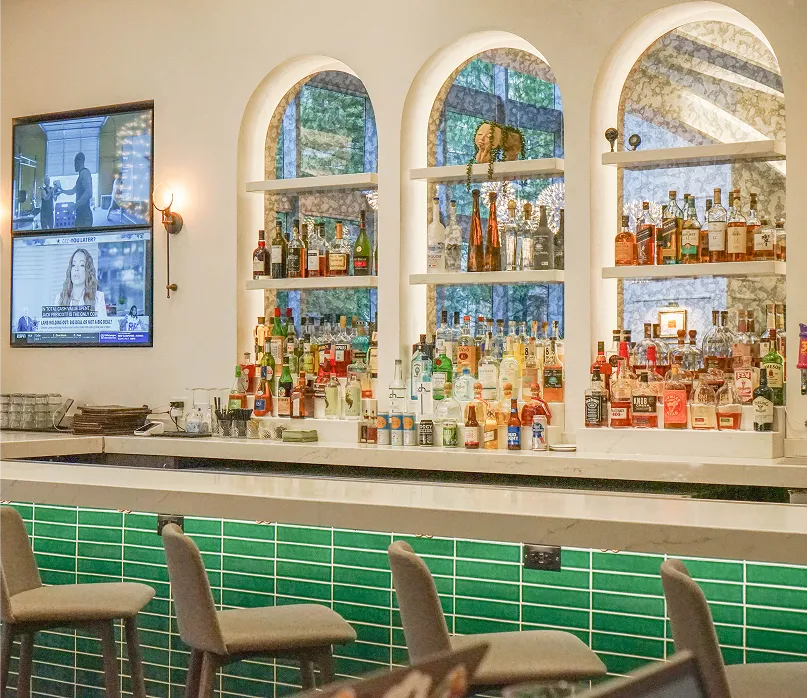Breathing New Life into Historic Buildings Through Food and Beverage

Breathing New Life into Historic Buildings Through Food and Beverage
In an era where sustainability and unique experiences are paramount, the adaptive reuse of historic buildings has emerged as a powerful trend through food and beverage. Transforming these architectural gems into vibrant dining destinations preserves cultural heritage and offers unparalleled character and charm that new constructions often lack.
At Infuse Hospitality, we specialize in creating authentic and super hyper-local experiences that enhance adaptive reuse projects by preserving the historical and architectural character through F&B. Historic buildings come with a story, a past etched into their walls, floors, and facades. When these structures are repurposed into F&B spaces, they offer diners more than just a meal—they offer a journey through time. Here are a few insights from our team of experts on how adaptive reuse through F&B revitalizes historic structures, fosters community engagement, and creates unforgettable dining experiences.
Sustainability and Conservation
Adaptive reuse is inherently sustainable. By repurposing existing structures, developers reduce the need for new construction materials and minimize waste. This approach aligns with the growing consumer demand for environmentally responsible practices within the F&B industry.
Preserving historic buildings also contributes to cultural conservation. It ensures that these structures’ architectural and historical significance is maintained for future generations. Restaurants and cafes housed in historic buildings often become landmarks themselves, contributing to the community’s cultural fabric.
Enhancing Community and Local Economy
Repurposing historic buildings for F&B use can act as a catalyst for community revitalization. These projects often attract attention and investment to areas that might otherwise be overlooked. When a historic building is given a new lease on life, it can stimulate local economic growth by attracting tourists, creating jobs, and encouraging other businesses to shop nearby.
The transformation of an old train station into a bustling food hall can rejuvenate an entire neighborhood, making it a destination for locals and visitors. This, in turn, fosters a sense of community pride and involvement as people come together to support and celebrate their local heritage.
Historic Buildings Revitalized Through F&B
● The Ferry Building, San Francisco: Originally constructed in 1898, this iconic structure has been transformed into a gourmet marketplace housing artisanal food vendors, restaurants, and cafes. The adaptive reuse of the Ferry Building has made it a culinary landmark while preserving its historical significance.
● St. Lawrence Market, Toronto: This historic market, dating back to the early 1800s, has become a bustling hub for food lovers. The adaptive reuse of the building has maintained its historic charm while providing modern amenities for vendors and visitors.
● Union Market, Washington D.C.: Once a food distribution center, Union Market has been revitalized into a vibrant food hall showcasing local chefs, artisans, and entrepreneurs. Preserving the building’s industrial character adds to the unique dining experience.
As the demand for unique dining experiences and sustainable practices grows, the adaptive reuse of historic buildings through F&B will likely become even more prevalent. These projects offer a practical solution to urban development challenges and enrich communities by preserving the past and creating spaces that tell a story.
Adaptive reuse is a win-win for historic preservation and the F&B space. By breathing new life into old structures, we can create dining destinations that are rich, environmentally responsible, and deeply connected to the community.
Whether it’s full-service restaurants, upscale food halls, interactive dining experiences, eatertainment, pickleball experiences, specialty cafes, bars, or more, Infuse Hospitality can create the perfect F&B experience, which is only limited by the scope of the imagination.
If you would like to learn how Infuse Hospitality can create an expertly crafted food and beverage experience for your adaptive reuse project, please reach out to say hello!

Read More
Your all-in-one F&B solution for hospitality, restaurants, and mixed-use spaces. We celebrate local identity and create sustainable social hubs.

© 2025. INFUSE HOSPITALITY, INC. ALL RIGHTS RESERVED
Designed by Charly Agency



